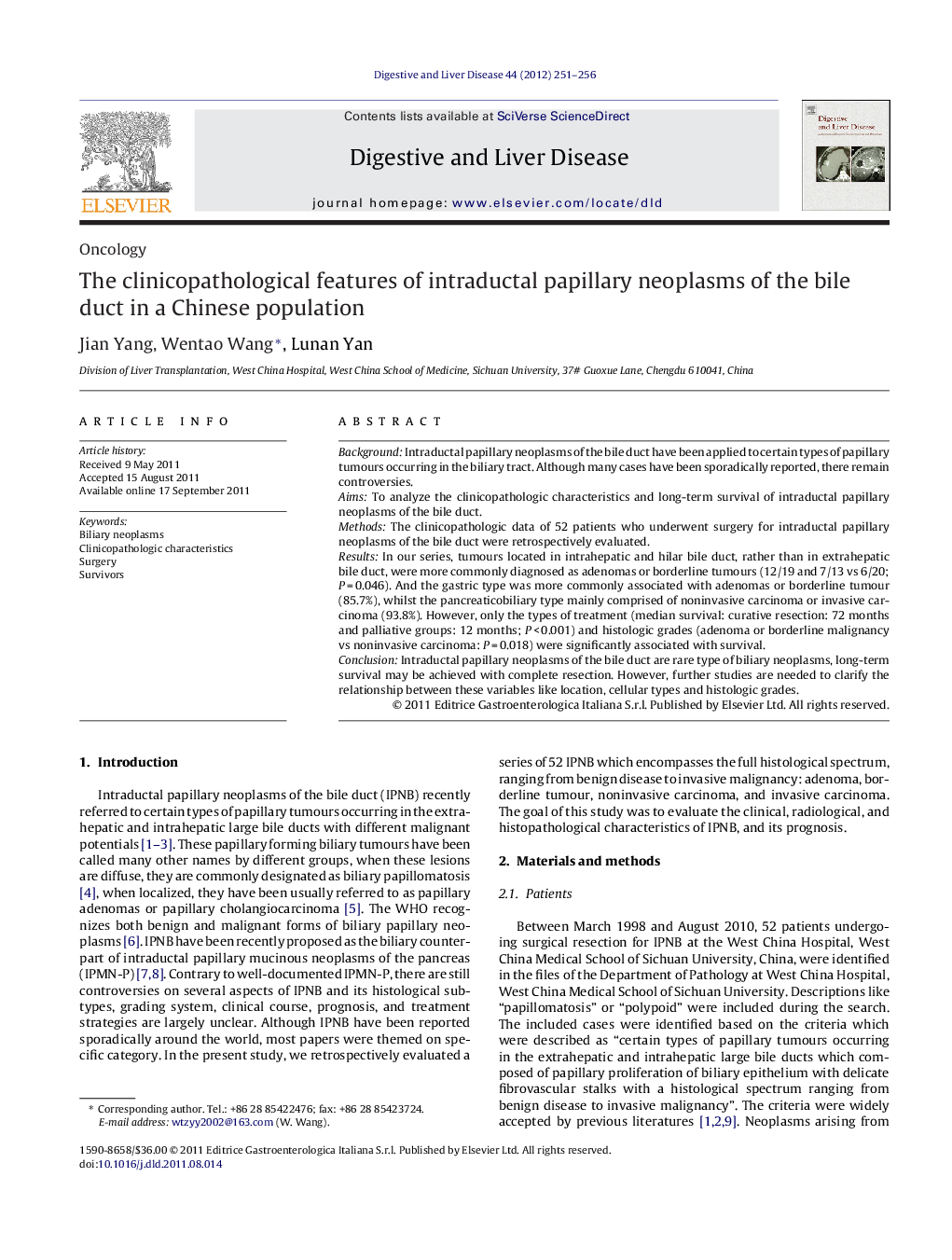| Article ID | Journal | Published Year | Pages | File Type |
|---|---|---|---|---|
| 3262655 | Digestive and Liver Disease | 2012 | 6 Pages |
BackgroundIntraductal papillary neoplasms of the bile duct have been applied to certain types of papillary tumours occurring in the biliary tract. Although many cases have been sporadically reported, there remain controversies.AimsTo analyze the clinicopathologic characteristics and long-term survival of intraductal papillary neoplasms of the bile duct.MethodsThe clinicopathologic data of 52 patients who underwent surgery for intraductal papillary neoplasms of the bile duct were retrospectively evaluated.ResultsIn our series, tumours located in intrahepatic and hilar bile duct, rather than in extrahepatic bile duct, were more commonly diagnosed as adenomas or borderline tumours (12/19 and 7/13 vs 6/20; P = 0.046). And the gastric type was more commonly associated with adenomas or borderline tumour (85.7%), whilst the pancreaticobiliary type mainly comprised of noninvasive carcinoma or invasive carcinoma (93.8%). However, only the types of treatment (median survival: curative resection: 72 months and palliative groups: 12 months; P < 0.001) and histologic grades (adenoma or borderline malignancy vs noninvasive carcinoma: P = 0.018) were significantly associated with survival.ConclusionIntraductal papillary neoplasms of the bile duct are rare type of biliary neoplasms, long-term survival may be achieved with complete resection. However, further studies are needed to clarify the relationship between these variables like location, cellular types and histologic grades.
